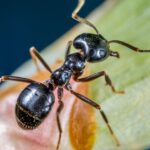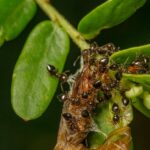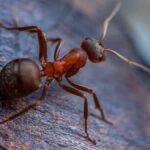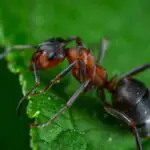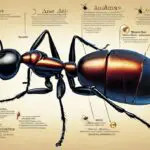Ants are fascinating creatures with astonishing characteristics.
For instance, do you know that whenever ants fight, they usually do so till one or both of them die? Strange, right?
that’s the price of attacking a colony!
What’s more? Known ant species worldwide are around 12,000. Pavement ants and carpenter ants are part of the most common ants.
While carpenter ants and pavement ants may look alike or have similar body structures and appearances, carpenter ants are considerably bigger and are way more destructive than pavement ants.
Have you seen ants around, and you do not know how to know if they are carpenter ants or pavement ants? Then, it would be best if you continue reading to learn the key differences between pavement and carpenter ants.
While no one looks forward to an invasion by any ant colony, a carpenter ants’ invasion/infestation can be a nightmare!
Let’s get to it, then.
Pavement ant; a general overview

Scientific name: Tetramorium caespitum
While pavement ants are generally expected to be found in areas closer to natural environments, they are one of the common house pests.
Pavement ants are small, similar to odorous house ants (3 to 4 millimeters). They use this characteristic to enter even the smallest holes or the slightest cracks.
They can either be brown or black. Also, the parallel grooves across the length of their bodies and double spines at the end of their thoraxes give pavement ants a distinctive appearance, helping to differentiate them from other ant species.
In addition, pavement ants possess wings which they lose once they begin to mate. And pavement ants have stingers, but the sting is too weak to affect humans.
A pavement ant colony can have as many as 10,000 ants. Pavement ants establish their colonies under concrete slabs or building foundations, from where they can enter houses through wall cracks.
The name “pavement ants” comes from their tendency to build nests under sidewalks or driveway pavements.
Carpenter ant; a general overview
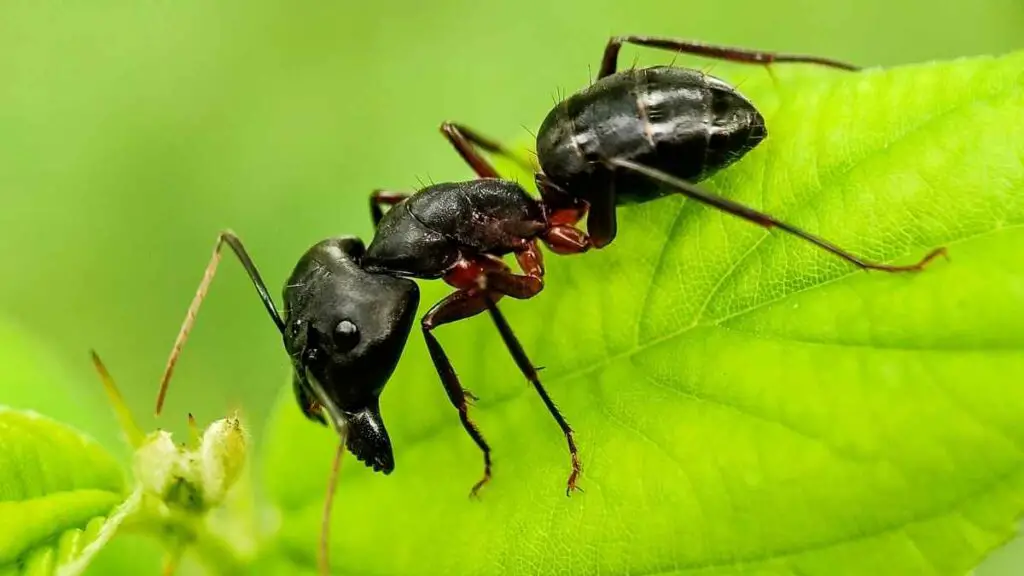
Scientific name: Camponotus
Carpenter ants are generally larger than other species (usually 6 to 12 millimeters). In addition, some male carpenter ants and breeding female carpenter ants possess wings.
Although most carpenter ants are ar black, some possess reddish or yellowish color.
Carpenters have three body parts, six legs, and large mandibles. When you observe them up close, carpenter ants are mean looking. They eat insects, meat, and sweets.
Additionally, these ants are very destructive and wreak more havoc in the house than other ant species. Their large mandibles mean carpenter ants can deliver painful bites on humans.
Also, carpenter ants are notorious tunnellers; they make tunnels in walls, furniture, etc. Getting rid of carpenter ants as soon as you find them is expedient.
Differentiating between pavement ants and carpenter ants
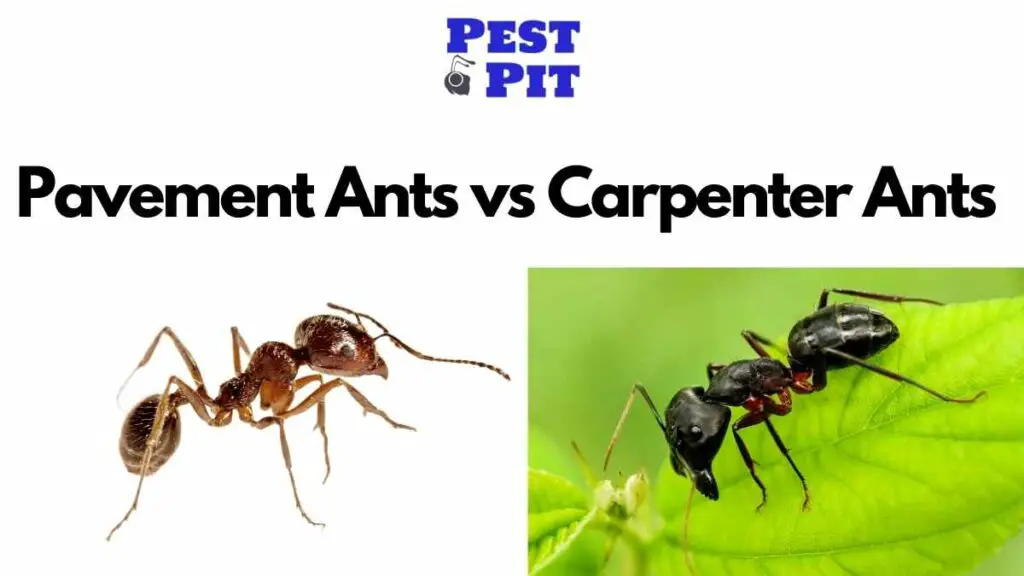
How do you differentiate between pavement ants and carpenter ants? Here are some key variations between pavement and carpenter ants;
Appearance/size
Carpenter ants have similar looks/appearances as pavement ants. However, there is a significant difference between their sizes.
Carpenter ants are around two to three times bigger than pavement ants, with their queen around 1 inch.
Regarding colors, it is tricky to fix a particular color for carpenter ants as there are more than 1,000 species of carpenter ants, and carpenter ants vary in color from black to brown, red, or yellow. In contrast, pavement ants are either brown or black.
Diet
While carpenter ants excavate wood to make room for their colonies, they do not feed on wood. Instead, they feed on fruits, other insects, and sugary food items.
The pavement ants’ diet is similar to the carpenter ants. Pavement ants also feed on insects, fruits, and sugar. Additionally, they feed on greasy food and waste from the kitchen. Whatever is sweet and tasty, that’s food for pavement ants.
Habitat
As the name suggests, carpenter ants are typically found in woods. They prefer moist wood structures because they can excavate and nest easily.
Anywhere there is decaying wood, or any wood at all (either forest trees, window frames, door frames, chimneys, wooden doors, etc.), is a good spot for carpenter ants to create their colonies.
Pavement ants thrive under sidewalks or foundations. A characteristic feature of a pavement ant colony is the presence of little sand piles on cracks in concrete or sidewalks.
You can also find pavement ants outdoors – under leaves, wood piles, rocks, and other debris.
Which is more harmful?
Pavement ant workers do not pose a direct hazard to humans, but they tend to consume anything edible. Pavement ants can contaminate your food items.
Pavement ants are social animals (i.e., they move in groups). Hence, they forage in groups which is not a pleasant sight.
Except for the inconveniences mentioned above, pavement ants are harmless to humans. Even their stings have little to no effect on humans.
Carpenter ants, on the other hand, are very harmful. They are notorious wood-destroyers. However, unlike termites, carpenter ants do not eat wood but carve it out to build their nests.
These ants generally eat up moldy/moist/dead wood. But, occasionally, they can eat up healthy woods, too.
If a carpenter ant invasion is left unchecked, it can lead to compromised structural beams, damaged woodwork, and ruined expensive wooden furniture pieces.
What to do when you have an ant problem?
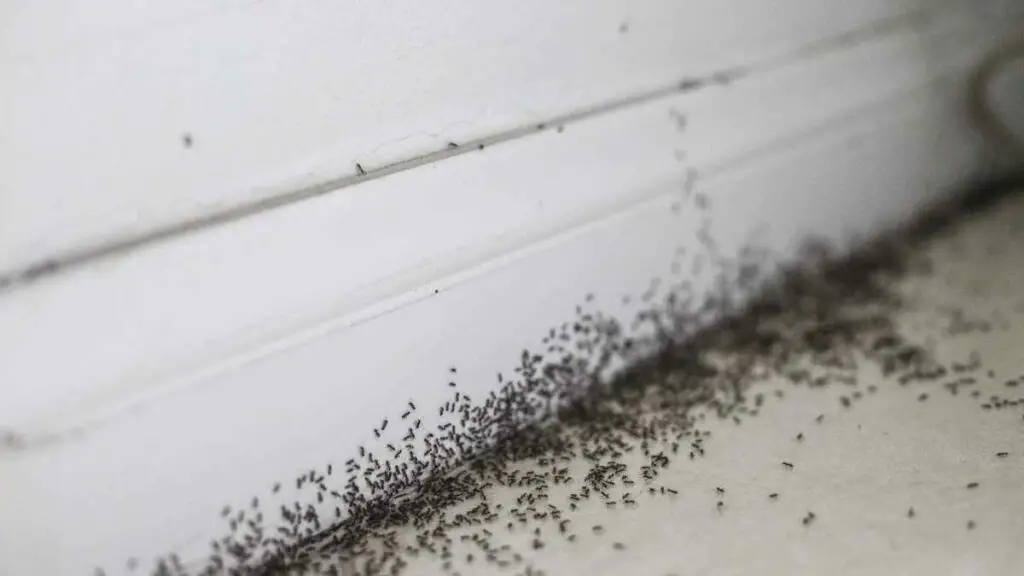
Whenever you notice ants (especially carpenter ants) in your house, you need to find a way to drive them out quickly. Here are some signs that you have an ant problem;
- Fine sawdust next to wooden walls, shelves, or even frames.
- Low crinkling sounds from inside walls.
- Hollow-sounding wood – which is usually due to extensive tunneling in the wood.
- Occasionally, you may see winged ants flying around in your house.
As you must have noticed, killing a handful of ant workers does nothing to deter these ants or reduce their numbers.
The colonies will send more worker ants. And your ant problem may persist as long as the queen is alive and she keeps breeding.
How do you now handle ant infestation? Here are some practical methods for combating ant infestation;
Insecticide spray
If you can track and locate the ant colony’s nest, you can drench the nest with an effective insecticide. However, spraying individual ants is not an effective way of getting rid of these tiny pests.
Ant baits
Some homeowners prefer ant baits to chemical sprays. The baits work by using greasy or sugary food to lure the ants. The baits can either contain borax or hydramethylnon. The ants eat this bait and carry some of it into their colonies, where it kills other members of the colony.
Essential Oils
Spraying/sprinkling natural ant repellants around your home (window sills, floorboard, doors) can effectively keep the ants at bay. Examples of natural ant repellant essential oils include; peppermint, lemongrass oil, eucalyptus, cinnamon leaf, thyme oil, tea tree oil, etc.
Non-repellant sprays
Since the ants would not notice them and walk into them more often, non-repellant sprays effectively control ant invasion.
Non-repellant sprays work similarly to ant baits. The ants come in contact with the spray particles and spread the active ingredient from one ant to another – effectively wiping out the entire ant colony.
Pest management companies
If your ant problem proves too much for you, or you do not want to go through the stress of handling the ant invasion yourself, you can contact pest control services, who will get rid of the ants for you.
Conclusion
Controlling ant infestations can be a serious issue. However, following the steps above makes you less likely to be plagued with ants.
Nonetheless, after ridding your environment of ants, it is important to take preventive measures to ensure they do not return.
Some preventive measures to take include;
- Removing water and food sources.
- Keeping the kitchen neat and disposing of food waste properly.
- Seal every potential entry point (cracks in the wall, openings in windows, etc.)
- Finally, keep your home clean at all times.
Good luck!


